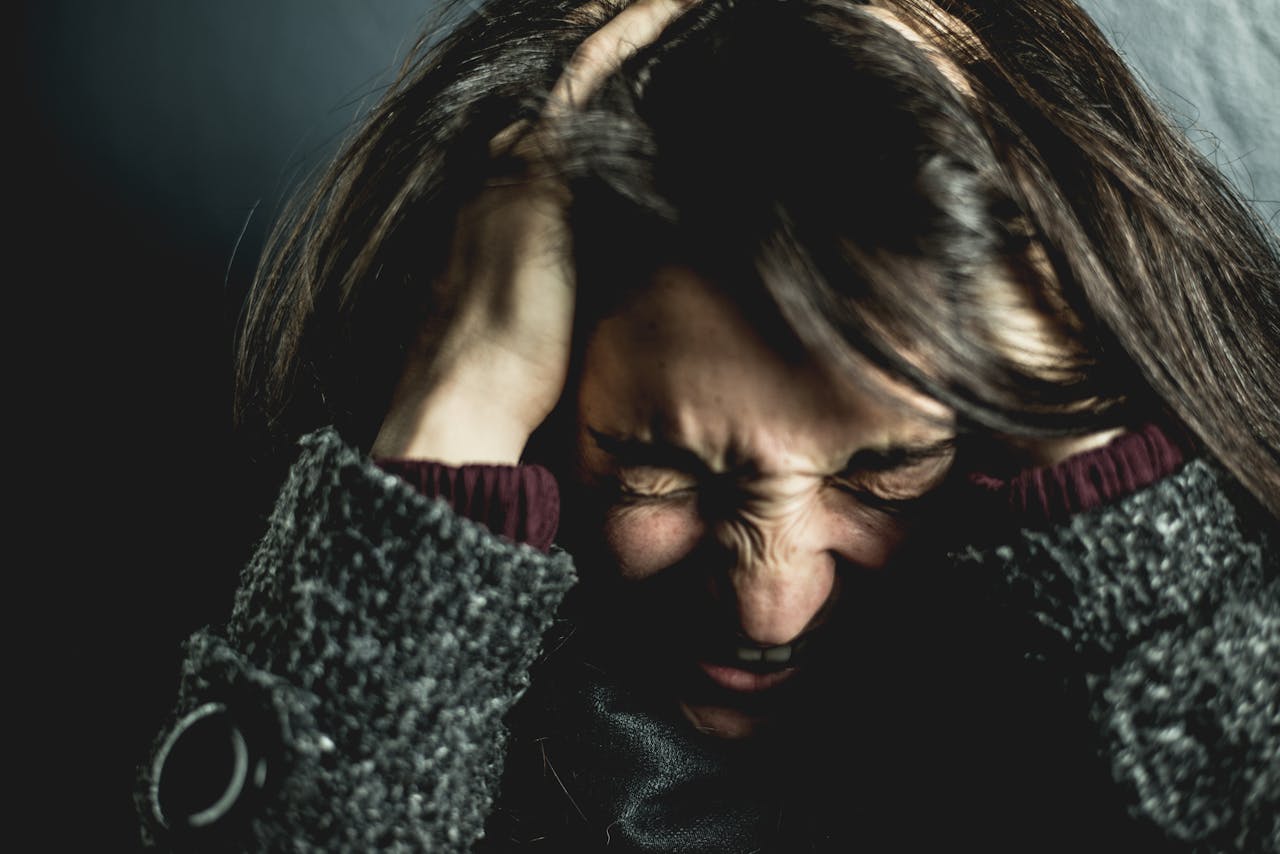We all experience anxiety in social situations, whether it’s the flutter of nerves you feel before giving a presentation or your heart rate increasing when meeting someone new.
“Nervousness and shyness are natural responses to situations that can be new or somewhat intimidating but are usually overcome when it is time to be in a social situation,” says Dr. Tirrell De Gannes, PsyD.
But how do you know if these responses are just the occasional stomach butterflies or something deeper, like social anxiety disorder (SAD)? Ahead, we lay out everything you need to know about SAD, including signs, symptoms, and self-help techniques.
Understanding Social Anxiety
If you’re anxious in social situations, does that mean you have social anxiety? Well, not exactly. Let’s break it down.
SAD is the second most commonly diagnosed anxiety disorder, affecting nearly 15 million adults in the U.S. There are two types of social anxiety disorder: generalized and non-generalized.
People with generalized social anxiety disorder feel intense anxiety in all or most kinds of social interactions, says Dr. Lauren Cook, Pasadena-based clinical psychologist and author of “Generation Anxiety.”
Non-generalized social anxiety, on the other hand, is triggered in specific social settings. It’s often performance-based, says Dr. Cook. Like, when you’re giving a speech, answering a question in class, or eating at a restaurant.
Some common symptoms of SAD include:
-Blushing
-Sweating
-Trembling
-Shallow breathing
-Rapid heartbeat
-Feeling being watched
-Mind blanking
-Nausea
-Dizziness
-Being extremely self-conscious
-Fearful of being criticized or rejected by others
-Avoiding situations where you might be the center of attention
-Avoiding being around other people
-Feeling anticipatory anxiety before any social event
-Mentally scrutinizing a social interaction when it’s over
If you have been experiencing these symptoms for at least six months and it’s affecting your ability to function, you may have social anxiety disorder.
Impact On Daily Life
Everyday tasks like going to work or school, taking phone calls, grocery shopping, or keeping appointments can feel overwhelming when you have social anxiety disorder.
“I pretty much always want to cancel and not go—it takes a lot just to get to the social part,” says Emily Taffel, 44, a mom and entrepreneur who has had social and general anxiety since childhood. “Physically, I get extremely overheated, my breathing speeds up, my heart races, I will get irritable very easily [and] in the worst scenario, it can become a full-blown panic attack.”
Automatic Negative Thoughts & The Spotlight Effect
Taffel is not alone in her experience—many people with social anxiety experience cognitive biases that prevent them from engaging in social situations. One common cognitive bias is automatic negative thoughts (ANTs), which are irrational negative beliefs and thinking patterns that are triggered in response to anxiety-provoking situations, explains Matt Sosnowsky, LCSW, MAPP. ANTs can further fuel anxiety and create a vicious cycle. They occur almost instantaneously and feel incredibly convincing, even though they are divorced from reality, adds Sosnowsky.
ANTs aren’t the only cognitive biases people with SAD experience—there’s also the “spotlight” effect. This is when a person believes that others are paying more attention to them than they are in reality, explains Dr. De Gannes. He adds that this overestimation of attention and the need to be “well-prepared” for it can exacerbate feelings of social anxiety.
Strategies for Overcoming Social Anxiety
The good news is social anxiety can be managed and overcome. Dr. Cook and Sosnowsky note that cognitive behavioral techniques can be helpful. Here are a few both recommend:
Cognitive restructuring: This involves identifying and challenging irrational negative thoughts that fuel anxiety (cognitive distortions) and replacing them with more positive and realistic ones. For example, if you notice a negative automatic thought, like catastrophizing, jumping to conclusions, or labeling (“I’m such a bore”), take a moment to jot down evidence that challenges that belief. “You’ll likely discover the things we tell ourselves are overblown or just plain untrue,” says Sosnowsky.
Exposure and Response Prevention (ERP): This CBT technique encourages people to gradually confront their fears and anxieties in a safe and controlled environment. Next, they’ll process their interaction with their therapist afterward to compare objective and subjective experiences, explains Dr. De Gannes. The more exposure a person has, the more confident they become in handling social situations, he adds.
Eye Movement Desensitization and Reprocessing (EMDR): Besides CBT, EMDR therapy can also be an effective tool for social anxiety, as it helps identify and work through traumatic experiences that may have led to social anxiety, says Jeanne Cross, a therapist specializing in EMDR and Trauma-Focused Cognitive Behavior Therapy (TF-CBT).
Other treatment options include prescription medications, like SSRIs, SNRIs, beta-blockers, and benzodiazepines, says Dr. Daniella Marchetti, a Miami-based clinical psychologist.
Self-Help Techniques
Medication and therapy aren’t the only treatment options for social anxiety disorder. There are other effective coping skills you can try to snap out of the fight-or-flight mode and overcome social anxiety:
*Paced breathing
*Body scan meditation
*Standing or walking barefoot on the ground
*Taking a short walk
*Holding something cold
“I write out my fears then try to play the other side of it and remind myself most people don’t remember half of what you say because they are too absorbed in their own thoughts or anxieties,” says an award-winning mental health blogger Lindsey Hall, 35.
Taffel likes to do the 5-4-3-2-1 grounding exercise. It involves naming five things you can see, four you can hear, three you can touch, two you can smell, and one you can taste.
“I also look for the weird and the whimsical,” she says. For example, look around and spot three things you’ve never seen before (the weird) and three things that are out of the ordinary (the whimsical). “By the time I cycle through, I’m usually able to smile and feel calmer,” she says.
Lifestyle Adjustments
One thing to keep in mind with any form of anxiety is that it can be managed from the “neck down,” says Sosnowsky. Simple lifestyle tweaks that can help you tackle social anxiety include:
*Eating a balanced diet: Dr. Stanford suggests cutting back on processed foods and sugar as they can negatively affect your mood. Consider eating more whole grains, fruits, veggies, nuts, seeds, and fatty fish.
*Prioritizing movement: Regular exercise, like running, biking, tai chi, or even just a walk, can help calm your mind and ease anxiety, says Dr. Stanford. “Yoga helps me a lot to ground myself before going to something,” shares Hall.
*Getting more probiotics: A study found that eating probiotic-rich foods (like yogurt, cottage cheese, and kimchi) is linked to fewer symptoms of social anxiety.3
*Limiting caffeine and alcohol: Some people turn to alcohol to lessen their anxiety, but it can actually worsen symptoms over time, says Dr. Marchetti. “Caffeine can cause and worsen anxiety, as well,” she adds.
*Getting enough sleep: According to a 2023 study, sleep deprivation can lower mood, make it difficult to manage emotions, and may worsen anxiety symptoms.4 Try to keep a consistent sleep schedule and get 7 to 8 hours of sleep every night.
Practical Tips for Navigating Social Situations
*When you have social anxiety, it can feel tempting to cancel plans. But doing so only reinforces your anxiety and avoidance behaviors, says Dr. Cook. Here are six strategies to try instead:
*Start small: Start with small, simple interactions in controlled settings. Like saying “Have a good day!” to the barista or cashier as you leave. Similarly, if mingling for the entire happy hour fills you with dread, aim to strike up just one conversation before heading home, suggests Sosnowsky.
*Arrive early: “Getting to an event early to scope out the space and be there before a lot of other people arrive helps me,” says Taffel.
*Rehearse conversations: “I also practice conversation questions and talking points before going somewhere so that I don’t feel anxious trying to think of things to say,” shares Taffel. You can also try role-playing with a therapist or in a social skills group to better manage anxiety in real-life situations.
*Use body language: Practicing body language skills like making eye contact, maintaining a relaxed posture, and a firm handshake may help you feel more confident in social situations.
*Play to your strengths: “I try to avoid social moves that will make me feel more awkward,” says Hall. Whether it’s humor, kindness, great listening skills, or something else, playing to your strengths in social situations can make it easier to connect with others, enjoy the interactions, and avoid anxiety triggers. Similarly, stick to topics you’re confident in.
*Be kind to yourself: “Social anxiety gets us so caught up in our own heads—worried that people are judging us—when in reality, others are preoccupied with their own thoughts,” says Dr. Cook. So let go of self-criticism and give yourself grace if you do goof up.
Social anxiety disorder aka social phobia is the crippling fear of being criticized, embarrassed, or rejected in social situations. The good news is it’s a treatable condition. With therapy, self-care strategies, and gradual exposure to social situations, it can be effectively managed and possibly cured. If you’re having symptoms, it’s important to get help at the earliest. The sooner you reach out, the sooner you’ll start feeling better.
By Noma Nazish and Medically reviewed by Daniel B. Block

